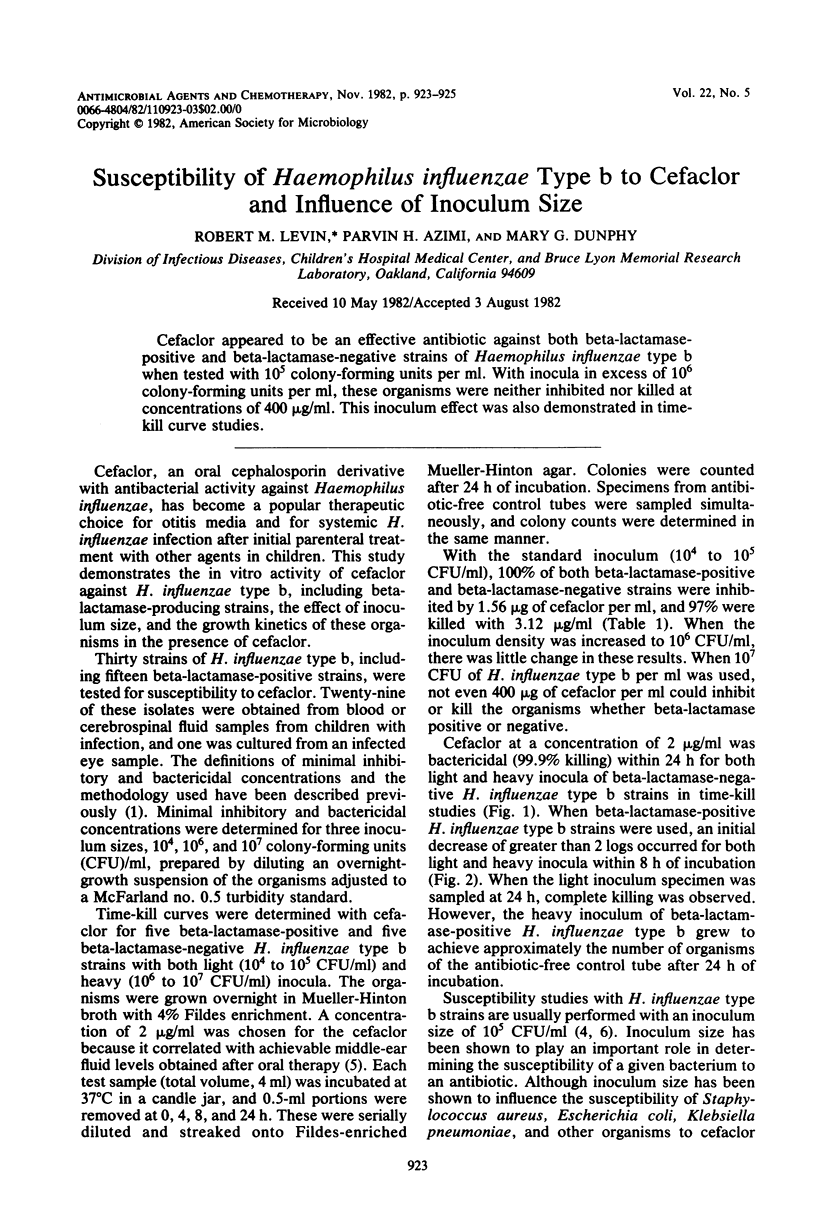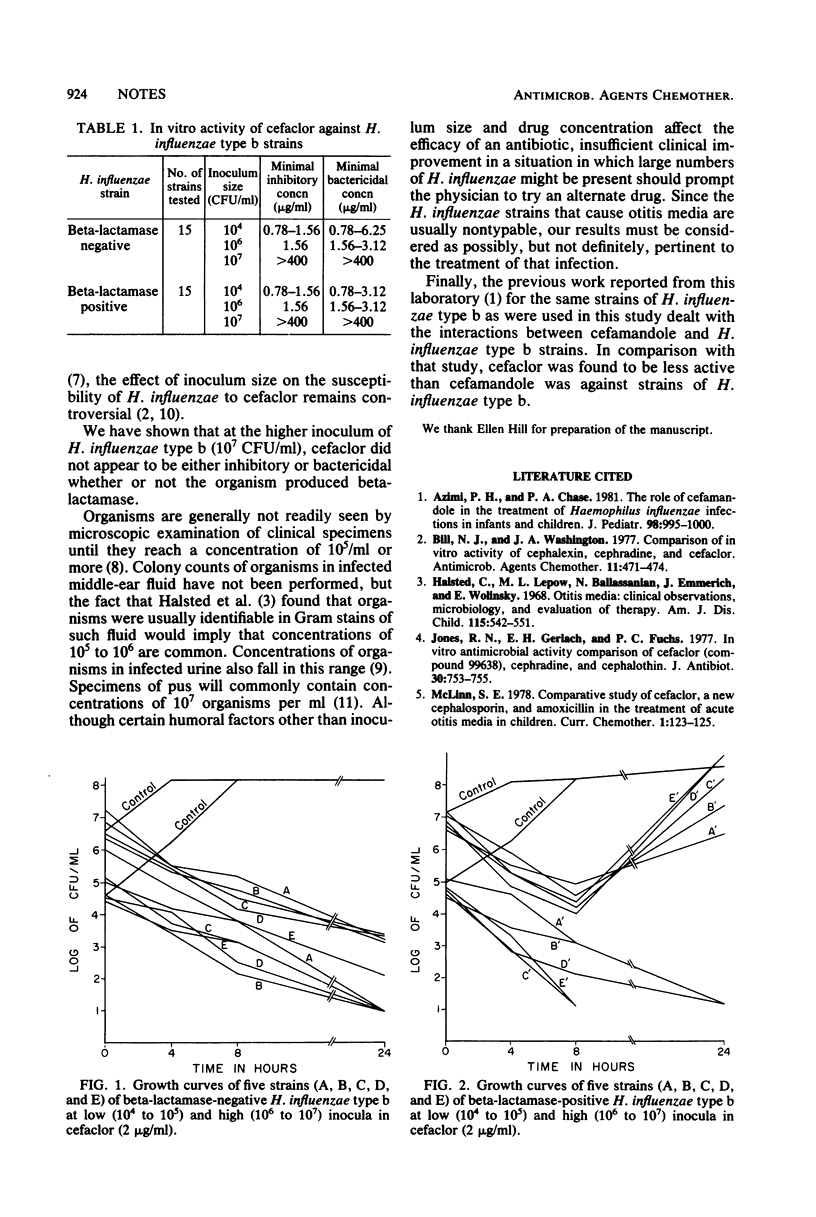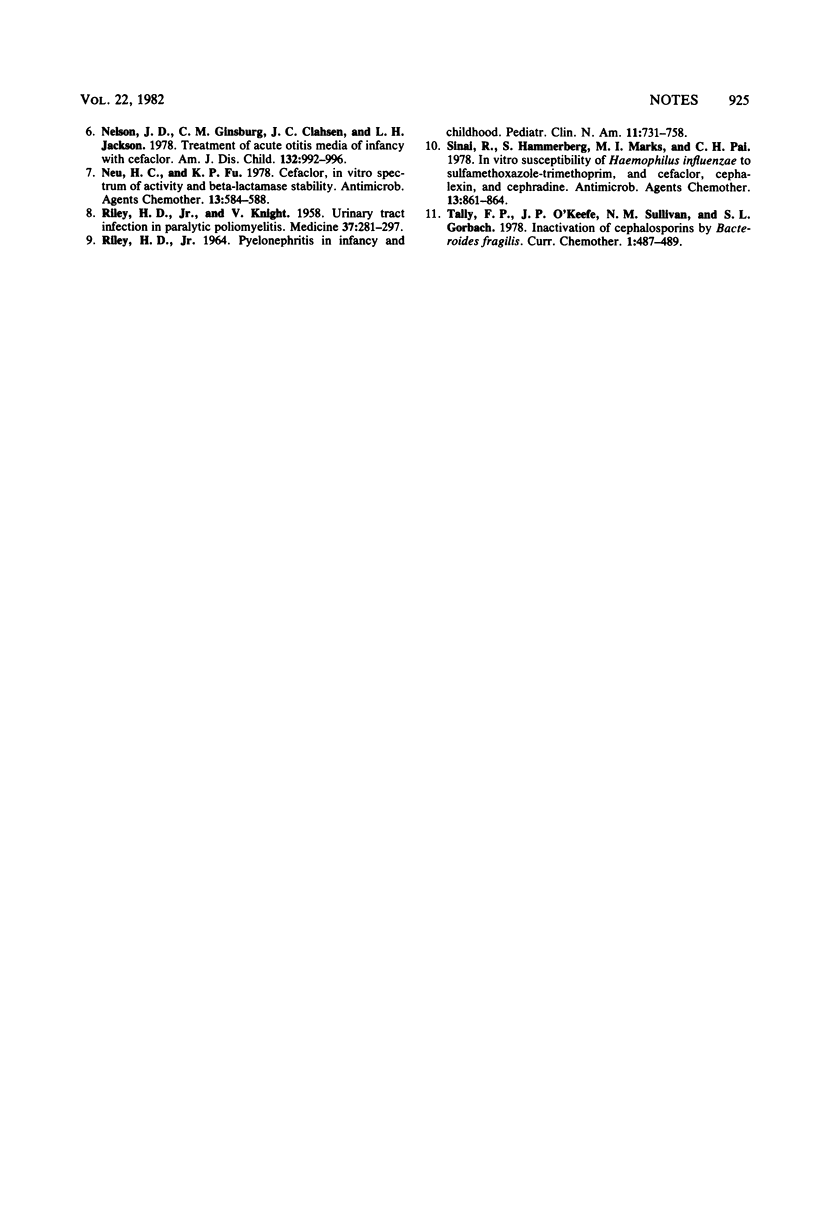Abstract
Cefaclor appeared to be an effective antibiotic against both beta-lactamase-positive and beta-lactamase-negative strains of Haemophilus influenzae type b when tested with 10(5) colony-forming units per ml. With inocula in excess of 10(6) colony-forming units per ml, these organisms were neither inhibited nor killed at concentrations of 400 micrograms/ml. This inoculum effect was also demonstrated in time-kill curve studies.
Full text
PDF


Selected References
These references are in PubMed. This may not be the complete list of references from this article.
- Azimi P. H., Chase P. A. The role of cefamandole in the treatment of Haemophilus influenzae infections in infants and children. J Pediatr. 1981 Jun;98(6):995–1000. doi: 10.1016/s0022-3476(81)80616-6. [DOI] [PubMed] [Google Scholar]
- Bill N. J., Washington J. A., 2nd Comparison of in vitro activity of cephalexin, cephradine, and cefaclor. Antimicrob Agents Chemother. 1977 Mar;11(3):470–474. doi: 10.1128/aac.11.3.470. [DOI] [PMC free article] [PubMed] [Google Scholar]
- Halsted C., Lepow M. L., Balassanian N., Emmerich J., Wolinsky E. Otitis media. Clinical observations, microbiology, and evaluation of therapy. Am J Dis Child. 1968 May;115(5):542–551. doi: 10.1001/archpedi.1968.02100010544003. [DOI] [PubMed] [Google Scholar]
- Jones R. N., Gerlach E. H., Fuchs P. C. In vitro antimicrobial activity comparison of cefaclor (compound 99638), cephradine, and cephalothin. J Antibiot (Tokyo) 1977 Sep;30(9):753–755. doi: 10.7164/antibiotics.30.753. [DOI] [PubMed] [Google Scholar]
- LOW Möglichkeiten und Grenzen der antibiotischen Therapie in der Behandlung von Krankheiten des Respirationstraktes. Monatsschr Kinderheilkd. 1956 Mar;104(3):106–107. [PubMed] [Google Scholar]
- Nelson J. D., Ginsburg C. M., Clahsen J. C., Jackson L. H. Treatment of acute otitis media of infancy with cefaclor. Am J Dis Child. 1978 Oct;132(10):992–996. doi: 10.1001/archpedi.1978.02120350056011. [DOI] [PubMed] [Google Scholar]
- Neu H. C., Fu K. P. Cefaclor: in vitro spectrum of activity and beta-lactamase stability. Antimicrob Agents Chemother. 1978 Apr;13(4):584–588. doi: 10.1128/aac.13.4.584. [DOI] [PMC free article] [PubMed] [Google Scholar]
- RILEY H. D., Jr, KNIGHT V. Urinary tract infection in paralytic poliomyelitis. Medicine (Baltimore) 1958 Dec;37(4):281–297. doi: 10.1097/00005792-195812000-00001. [DOI] [PubMed] [Google Scholar]
- RILEY H. D., Jr PYELONEPHRITIS IN INFANCY AND CHILDHOOD. Pediatr Clin North Am. 1964 Aug;11:731–758. doi: 10.1016/s0031-3955(16)31592-9. [DOI] [PubMed] [Google Scholar]
- Sinai R., Hammerberg S., Marks M. I., Pai C. H. In vitro susceptibility of Haemophilus influenzae to sulfamethoxazole-trimethoprim and cefaclor, cephalexin, and cephradine. Antimicrob Agents Chemother. 1978 May;13(5):861–864. doi: 10.1128/aac.13.5.861. [DOI] [PMC free article] [PubMed] [Google Scholar]


